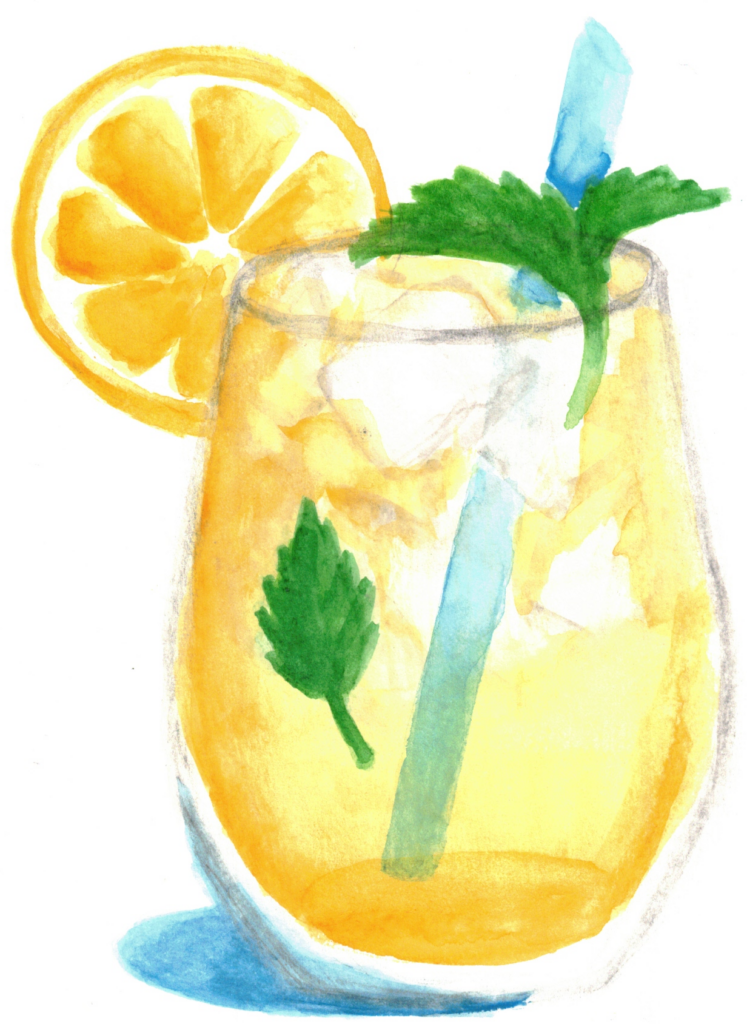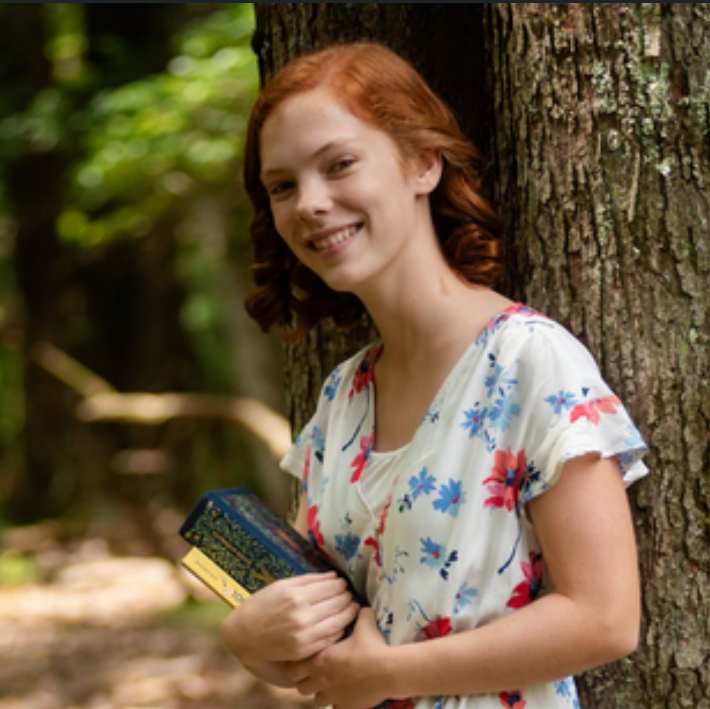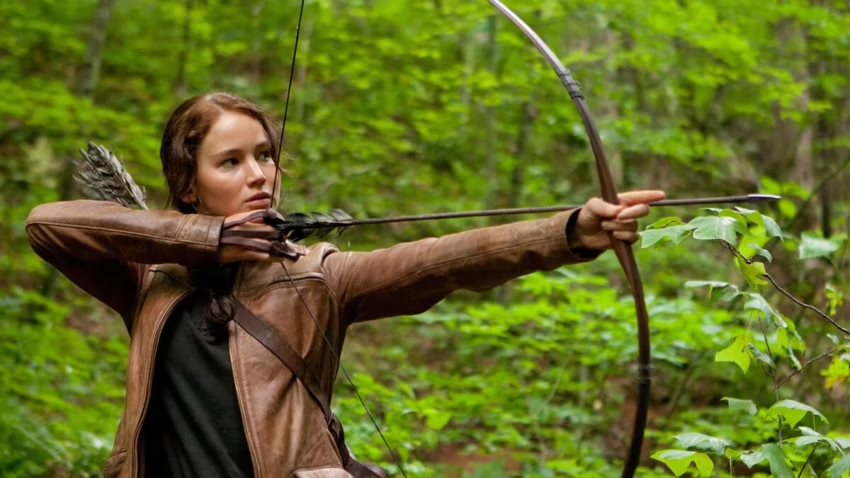In the beginning of the month, I wrote an article on what not to do when writing a love triangle. I went through many of the common pitfalls and difficulties that come up when writers include a love triangle in their story carelessly. But it’s completely possible to avoid those traps and write a love triangle that is beneficial and ultimately an asset to your story.
Sophia addressed one of the ways to this in her article last week. Love triangles can be beneficial when they drive your protagonist’s character arc forward. But that’s not the only way to make a love triangle meaningful.
So this month, in our final article for this series on love triangles, we’re going to be looking at the love triangle in The Hunger Games trilogy, what made it so good, and how it highlights yet another technique that you can use to make sure your love triangle is beneficial to your story.
The Hunger Games Trilogy
Katniss Everdeen grew up in an impoverished community, the last of the twelve districts ruled by a corrupt and dictatorial Capitol of aristocrats. At the age of eleven, her father died in a mining accident, leaving her as the sole breadwinner for her sister and mother. Like most people around her, she’s no stranger to suffering, much of it brought on by the Capitol. By the time the story opens to Katniss as a teenager, her longtime friend and confidant Gale Hawthorne has begun sharing his dreams of starting a better life by sparking a rebellion. He has a fiery energy and a deep hatred of his leaders that won’t be satisfied until the wrongs done to him, his family, and his friends are met with justice.
Katniss, on the other hand, has no interest in starting unnecessary trouble. She knows what she has to do to protect her family, and for her, that’s enough. She rejects both his radical dreams of rebellion and his growing affection toward her as they become older. Despite their disagreements and sibling-like relationship, Gale clearly begins to be protective of her in a way that hints at deeper feelings.
Things are complicated when Katniss is selected for the annual Hunger Games, a live-streamed competition where a group of children fight to the death for the entertainment of the Capitol. Peeta Melark, an acquaintance from Katniss’s district, is also selected, and the two quickly figure out that the way to win the affections of the Capitol and possibly earn an upper hand in the games is to fake an interest for each other. Katniss learns about Peeta’s life as a baker’s son, his love for beauty and simplicity, and his beliefs that goodness and mercy are stronger than evil. They develop a false romance over the several days that the games take place, sharing more and more personal moments and praying that the romantic interest will tip the odds in their favor. Ultimately, it does end up saving them.
The catch is that Peeta thought it was all real.
When they make it back home, Katniss is caught between complicated politics, a growing rebellion, and the interest of both Peeta and Gale. Although Peeta understands Katniss did what she had to survive, he’s also disappointed that she doesn’t feel the way he does. And Gale has dealt with rising jealousy watching Katniss and Peeta develop a relationship — genuine or not — in the Games. The tension has every earmark of a love triangle, but it ultimately avoided the pitfalls most fall into. And it’s all because of a very specific technique the author used to give the tension meaning and purpose.
Why The Love Triangle Worked
When I first heard the central romantic conflict of The Hunger Games involved a love triangle, I was more than skeptical. I’ll admit I was even a bit cynical. Far too many young adult action-adventure stories include love triangles that detract from the story, include obviously-manufactured tension, and force their protagonist to act out of character. Katniss is fiercely determined, uninterested in romance, with a clear drive that would only be amplified by larger duties and responsibilities. For her to be involved in a love triangle, waffling between the affections of two teenagers while a rebellion was going on, was going to take a lot of character manipulation by the author. I simply couldn’t see how romantic tension like that would be believable and in-character.
Yet the author still managed to create a love triangle that was not only believable, but also an active support to both Katniss’s journey and the larger story. And it’s all due to one specific technique. But before we look into that, I also want to point out what the love triangle didn’t do, because that is almost as important.
For one thing, Katniss wasn’t robbed of her agency. As a character with a clear drive and determination, she didn’t suddenly lose her capacity to make decisions and act on them when it came to the subject of romance. Rather, she was clear that she wasn’t interested in pursuing a relationship with either Gale or Peeta, and yet continued to feel the ongoing tension from the fact that both of them still deeply cared for her. But that tension wasn’t dramatized to make the conflict more interesting. Doing that would have created the sort of clearly-manufactured tension that so many young adult love triangles suffer from. Instead the conflict was subtle, realistic, and thus more true to Katniss’s character. She didn’t stop being Katniss when talking with Peeta or Gale about her feelings. Her character was consistent throughout the trilogy, rather than being manipulated for the sake of a love triangle.
Katniss also didn’t misprioritize due to the romantic tension. She was clear that winning the war and being involved with the revolution were more important than her current romantic feelings, just as surviving the Hunger Games and maneuvering delicate (and potentially deadly) politics afterwards had been her priorities before. Romance was secondary and so, while this made for fewer scenes to drive home the romantic tension, it allowed Katniss to come across as more realistic and compelling.
But the love triangle in The Hunger Games didn’t just avoid being a detriment to the story. It also actively benefited the story by using the love triangle to illustrate one of the biggest themes of the series.
Although it’s not apparent in the first book, by the third it’s very clear that the central conflict of The Hunger Games is not about whether or not the Capitol will succeed in crushing the rebellion, if Katniss will ultimately be able to protect her family, or who her love interest will be in the end. Rather, the crux of the conflict in The Hunger Games trilogy and the biggest question it’s asking is whether or not Katniss (and the rebellion as a whole) will ultimately become the very evil they seek to destroy.
In other words, can good people fight fire with fire?
As Katniss faces more and more injustice, suffering, and pain at the hands of the Capitol, the conflict within this question rises higher and higher. She experiences so much tragedy and loss for events that were out of her control that the question only becomes more prevalent. Although once she could avoid it, protect and provide for her family, leaving philosophical questions up to others, now she is forced to face it.
And to make this question — this conflict — all the more palpable, the author turned it into two real, compelling, fully-fleshed out characters in Peeta and Gale.
Gale has pushed for rebellion since the beginning. He feels injustice more deeply than Katniss and believes that true vindication will only come when the Capitol is forced to experience exactly what they’ve done to others. He burns with a passion for vengeance that Katniss doesn’t share at first, but it pushes him and others to fight and risk everything to vindicate the Capitol’s wrongs.
Peeta, on the other hand, understands the cost of rebellion. He sees that the cycle of violence will only stop when one side shows mercy along with justice, and is willing to be gracious if it means fewer innocent lives are lost. He’s no stranger to the Capitol’s wrongs, nor how much they deserve what Gale wants to see. But he fears that the kind of leadership it takes to mete out the sort of justice that is required would land everyone right back where they started — under a new dictatorship, with a different name, but controlled and suffering all the same.
Katniss doesn’t pursue either of them because she’s never wanted to have to face that question. She wants to protect her family and go home every day — that’s it. But as that becomes less and less of a possibility, the tension between her, Peeta, and Gale is also accentuated to illustrate it. Just as Katniss can no longer remain complacent, not making a decision between the two very different philosophies, she can no longer resist the pull of two very different people. The love triangle in The Hunger Games was powerful because it was representative of a deeper, more fundamental truth that formed both a critical conflict and central theme of the entire trilogy. Without that deeper undercurrent, the romantic tension would have been lackluster at best and a detriment to the story and all three characters involved at worst.
Her ultimate acceptance of Peeta is a powerful illustration of her realization of the series’ heart and theme. If we lose our humanity fighting for innocents, we become the villains we seek to end. If we forget mercy altogether for the sake of justice, we become vengeful rather than just. If we are complacent with the death of innocents if they are the cost of avenging wrongs, we are no longer innocent ourselves.
Peeta is an illustration of the actual strength of goodness and humanity (which are often seen as weak or naive) in the face of truly terrible evil. The fact that Katniss ultimately agreed to marry him speaks to more than just their compatibility as partners. More so it illustrates a deeper theme that weaves throughout the trilogy, coming to a head at its climax, and reaching a resolution in Katniss’s choice both on how to deal with the old regime and to accept Peeta.
If you want to make your love triangle matter — or really any romantic tension at all — then tie it to a deeper truth, conflict, or theme that is central to your story. Don’t let it remain surface-level, serving as superficial tension to entertain your audience before your characters arrive at the real conflict. Whether your characters serve as a direct illustration of two philosophies or just draw out deeper questions and themes through the tension, allow them to show a new perspective and dimension of your theme. Give your love triangle purpose through your book’s message, and it will truly become an indispensable element of your story.



Let us know in the comments:
What did you think of the love triangle in The Hunger Games? Were there other elements that made it different from most other love triangles?


Hi! My name is Mara, and I’m a Christian artist, violinist, and blogger. I remember the day that I decided that I would learn something new about what makes a good story from every book I picked up — whether it was good, bad, or a mixture of both. I use this blog as a way of sharing some of the tips and tricks I’ve learned, and highlight which books, cartoons, and movies have taught me the most about writing an awesome story.


Alright, I’ll admit that I liked this triangle in particular. It didnt get in the way of the plot, and Katniss wasn’t completely oblivious like many main characters, so I suppose that this triangle worked. Now that you have articles on the love triangle, do you think you could write anything sometime on how to write a romantic relationship without a triangle? Specifically, one that extends over a whole series.
While we haven’t written an article specifically on slow-burn relationships, Sophia has actually written a lot about certain aspects of romance, such as writing their first meeting (https://storyfortress.com/lovely-war-how-to-write-a-ya-meet-cute-that-isnt-annoying), writing enemies to lovers (https://storyfortress.com/the-cruel-prince-verses-pride-and-prejudice-enemies-to-lovers), and how to make your readers love the ship (https://storyfortress.com/scarlet-how-to-make-your-readers-love-a-ship). I personally haven’t read a lot of slow-burn myself, but one show I can recommend that did an excellent, five-season-long romance is Agents of SHIELD (just check a parents guide for content warnings, of course.) Hope this helps, and I’ll definitely keep your idea for a romance article in mind!
Very nice! I am not one for the romantic elements in stories and would have preferred to have the romance entirely eliminated from the Hunger Games book. (I was actually a bit skeptical when I started reading this post, but you did a great job analyzing the book and pulling out deeper meanings.) I love how you read between the lines of the love triangle idea and realized how it was symbolic for one of the larger themes of the story: the positive effects of goodness outweighing the violent results of vengeance. I also appreciated your writing tip encouraging writers to tie relationship tensions to deep truth and beneficial moral. I believe that is a good rule of thumb that ought to be applied to the inclusion of many story elements.
Hello fellow commentor! Now there are three of us.
Yay!!!
I agree! Whether it’s romance or a subplot or something else altogether, I find most elements should be tied to a deeper theme.
Thanks so much for reading! 🙂
Great analysis!
Thanks! 🙂
I recently read the Hunger Games and I agree- Though I was Team Gale at first, not gonna lie.
Childhood friends in love triangles can be so under appreciated.
Very good article!!
Thank you!
Personally, I was rooting for Peeta the whole time, although I love the Katniss-Gale dynamic — it just seems better as a platonic, sibling-like relationship to me, rather than a romantic one.
But I can still see where you’re coming from. Reading a book with a love triangle where the childhood friend is the ultimate love interest would definitely be interesting!